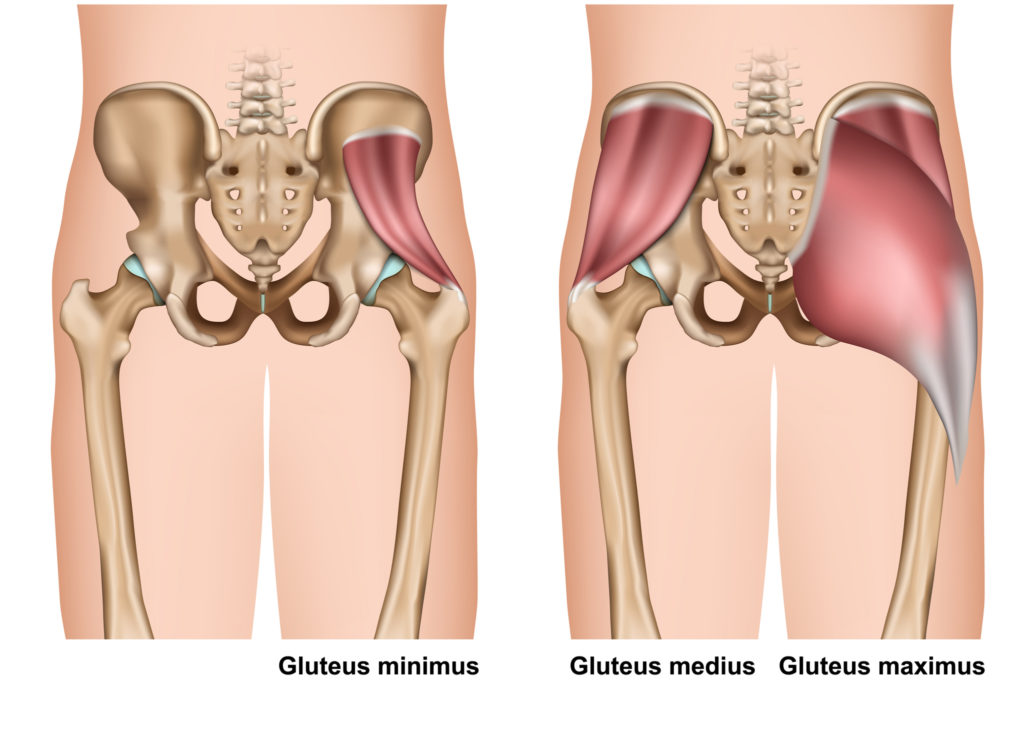
The New Year’s newsletter kicked off with a look at Six Pack Abs. Continuing the theme of examining muscle groups we are going to give attention to the gluteal muscles in this edition. The abdominals are obviously considered part of the core, but what may not be as commonly thought of as part of the core are the gluteal muscles.
There are three muscles that make up the gluteal group. They are the gluteus maximus, gluteus medius and gluteus minimus. The gluteus maximus is the outermost layer, followed by the medius and then the minimus.
The gluteal muscles act to extend the hip or stretch out the leg in back, as in an arabesque. The gluteal muscles are antagonists to the hip flexor group. Where the hip flexors crease or fold the front of the hip joint, the gluteal muscles are meant to extend or open the front of the hip joint. With every step, the hip is meant to flex and then extend. Unfortunately, that hip extension may not happen optimally if the gluteal muscles are weak.
The gluteus maximus is the largest muscle in the body. In addition to hip extension, the maximus also acts to externally rotate the leg so it works together with the external hip rotators, again as in an arabesque. It is a powerful muscle that is meant to be used, but with our sitting, sedenatary culture, the gluteal muscles, including maximus, are often underdeveloped.
The gluteus medius is so important and far too often doesn’t get the attention it deserves. This muscle abducts the leg or lifts it to the side. The gluteus medius stabilizes the hip so every time you take a step your hip doesn’t drop as you lift your other leg up. Example: if you lift your right leg to take a step, your left gluteus medius will work to keep your hips level. It is also interesting to note that there is a correlation between gluteus medius weakness and low back issues.
The gluteus medius helps to move from a sitting to standing position and is important in balance. If you are standing on one leg and notice your ankle is wobbly, it might not be your ankle. There is a good chance that your gluteus medius is weak causing the instability.
The gluteus minimus is the inmost or deepest layer and the smallest of the gluteal muscles. Like the gluteus medius, the minimus abducts the leg and can internally or externally rotate the leg. For both the gluteus medius and minimus, there are fibers toward the front of the hip that can internally rotate the leg and there are fibers in back that externally rotate the leg.
While the abdominals are considered the core, the gluteal muscles play a pivotal role and some like to consider them part of the core as well. Without the gluteal muscles, you wouldn’t be able to stand up straight as they extend or open the hips to bring you upright. The gluteal muscles are also vital for gait.
Hopefully, this break down of the gluteal muscles inspires you to not only get your derrière in shape but also appreciate how important these muscles are to daily functional movements and to even having a strong core.
